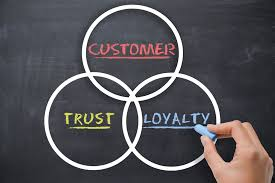In
today’s fast-paced entrepreneurial ecosystem, first impressions matter more
than ever. For emerging businesses, branding is no longer optional—it is highly
essential. That’s why many founders are choosing a Logo Design Package in
the UK over quick fixes or DIY solutions. A strong visual identity created
through Custom Logo Design in the UK helps startups compete, connect,
and grow from day one in the crowded Logo Design landscape.
The Power of a Professional First Impression
A
logo is often the first interaction a potential customer has with a startup. UK
startups understand that a professionally designed logo instantly communicates
credibility and seriousness. A polished logo signals that the brand is
trustworthy, well-planned, and here to stay—something investors, partners, and
customers all value.
Standing Out in a Competitive Market
The
UK startup scene is highly competitive, with new businesses launching daily
across industries. A generic or template-based logo can easily get lost. By
investing in Custom Logo Design in the UK, startups ensure their brand
stands out with a unique identity that reflects their mission, values, and
personality. A professional Logo Design Package in the UK offers
originality that helps businesses remain memorable in a saturated market.
Consistency Across All Platforms
Startups
operate across multiple platforms—websites, social media, apps, pitch decks,
and marketing materials. Professional logo design packages provide versatile
logo formats that work seamlessly everywhere. This consistency builds brand
recognition and trust, which is critical for startups looking to scale quickly
and establish authority in their niche.
Long-Term Cost Efficiency
While
some startups may hesitate due to budget concerns, many realise that investing
early in professional design saves money later. DIY logos often require
redesigns as the business evolves, leading to rebranding costs and confusion. A
thoughtfully created logo from a Logo Design expert is built to grow
with the brand, making it a cost-effective long-term solution.
Strategic Branding, Not Just Design
A
key reason, startups choose a Logo Design Package in the UK is the
strategic approach behind it. Professional designers research competitors,
target audiences, and market trends before creating a logo. This ensures the
design isn’t just visually appealing but also strategically aligned with
business goals—something DIY tools simply can’t offer.
Building Investor and Customer Confidence
Startups
seeking funding or partnerships know that presentation matters. A strong logo
enhances pitch decks, websites, and branding materials, making the business
appear more established and investment-ready. Customers, too, are more likely
to engage with a brand that looks professional and reliable.
For UK startups aiming to build strong foundations, investing in a Logo DesignPackage in the UK is a smart strategic move. With the expertise of Custom Logo Design in the UK professionals and a focus on long-term brand growth, startups gain more than just a logo—they gain a competitive edge in the evolving Logo Design in the UK market.
Also
read: 5 Signs That You Need A New Logo
Design

.png)

.png)
.png)




.png)



.png)
.png)